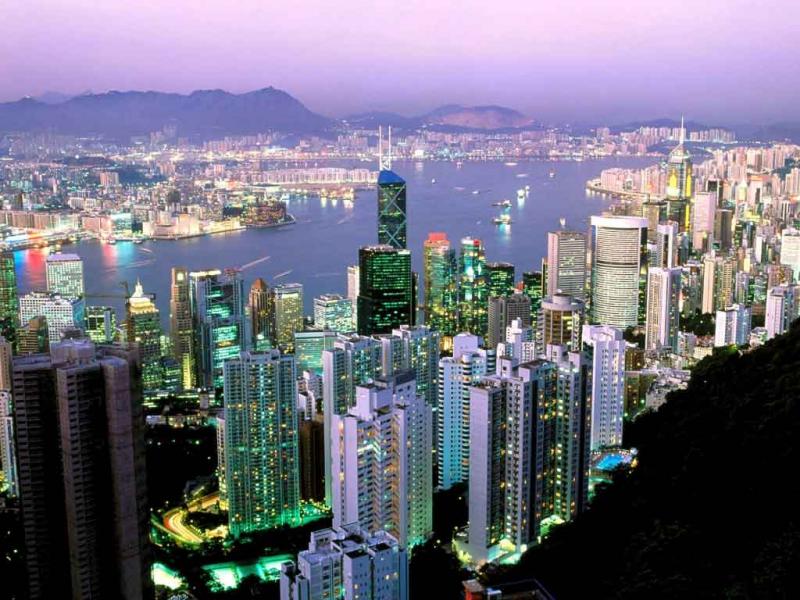
The British Influence – Hong Kong
by Sean Mahon
Cast your mind to former British colonies and the first countries that spring to mind are usually India, Australia and the biggest of them all – America. But a country which some people may not have been aware of as a former British colony is Hong Kong, now a financial district of China, Hong Kong from 1898-1997 was subject to a 99-year lease by Britain. In this period and throughout the 1800s Britain used the area as a venue for trade and the colony flourished as an economic powerhouse during the 19th and 20th century. But of more interest is the fact that Hong Kong adopted certain British cultural elements and made them their own whether it is the language or architecture, remnants of British influence still dominant today and they can be explored, admired and are historically enriching.
Hong Kong came into British possession after the First Opium War between Britain and China which lasted from 1839-1842, after Britain emerged victorious China ceded Hong Kong to Britain through the Treaty of Nanking, which meant it became a Crown Colony of the British Empire. The location of the port was of great to convenience to Britain for trade and gave them a foothold in the far east, after understandable paranoia of the security of their colonisation a lease was signed between the British and Chinese Governments in 1898 which saw an agreement put in place for control of Hong Kong and 200 surrounding islands with the promise that they would be handed back in 99 years.
So amidst the cool steal and glimmering glass of the impressive city landscape that dominates this thriving, modern financial district fragments of British rule can be found which nicely juxtaposes with the relentless fast paced nature of the area.
St John’s Cathedral
Completed in 1849, this Anglican Church is an elegant and grandiose building and is also the current seat of the Archbishop of Hong Kong. The oldest Christian church in the area, it was designed in the style of 13th century early English Gothic architecture. It is the oldest surviving Western ecclesiastical building in Hong Kong and has been a witness to the many ups and downs that the country has experienced, such as being damaged by Japanese military during World War Two. It offers a small slice of traditional, peaceful England and since 1997 - has been open for everyone with services in English, Cantonese, Mandarin and Tagalog.
The Murray House
A beautiful Victorian-era building originally built in 1844 in the present-day business district of Central, the building was relocated to Stanley, in the South of Hong Kong Island during the early 2000s. Designed in a classical architecture style, it is certainly a sight to behold as originally it served as a military base. Fascinatingly the building was dismantled in 1982 and the bricks were kept until it was restored in its new location, highlighting the buildings cultural heritage and its iconic status. On the first floor of Murray House, there are many restaurants which can be enjoyed as the building has managed to embellish the islands reputation as a gourmet hot spot, all the while offering magnificent sea views.
Legislative Council Building
The divine neo-classical style of this building is home to Hong Kong’s Legislative Council, surrounded by daunting skyscrapers it offers a glimpse of a more traditional, charming past. Supported by ionic columns, with a central pediment that contains the statue of the Greek Goddess of Justice, Themis who appears blindfolded and holding a scale – it is actually a replica of the one on the Old Bailey of London. Built in 1912, it was the home of the Supreme Court until 1985 when it was converted into the Former Legislative Council. Nicknamed Legco, it is an extremely attractive building that appears even more alluring when lit up during the evening hours.
The Clock Tower
Found at the southern shore of Tsim Sha Tsui, next to Victoria Harbour this stand alone tower stands at 44 metres tall and was erected in 1915 on the original site of the Kowloon Station. The station stands no more but the red brick and granite tower beams proudly as an elegant reminder of the once vital steam train. Like the Statue of Liberty in New York, the clock tower is a memorable landmark for the millions of Chinese immigrants who have passed through the terminus to begin their new lives in a new country. It stands today as a truly valuable landmark and meeting point for tourists who wish to appreciate an interesting site that serves as a reminder to the country’s history.
Round up
Taking a walk and seeing Hong Kong’s colonial past is a tremendous way to take in the country, many of the buildings have not survived due to Hong Kong’s insatiable thirst for modernisation – so the ones that are left are worthy sites to see. They serve as superb reminders of the past and offer aesthetic replenishment from the shiny, character-less sleek buildings that line most of Hong Kong’s streets.
Share this article:



















